Edge IoT-Enabled Cyber–Physical Systems with Paper-Based Biosensors and Temporal Convolutional Networks for Real-Time Water Contamination Monitoring †
Abstract
1. Introduction
2. Literature Survey
3. Methodology
4. Experimental Results and Discussion
5. Conclusions
Author Contributions
Funding
Institutional Review Board Statement
Informed Consent Statement
Data Availability Statement
Conflicts of Interest
References
- Bexeitova, K.; Baimenov, A.; Varol, E.A.; Kudaibergenov, K.; Zhantikeyev, U.; Sailaukhanuly, Y.; Toshtay, K.; Tauanov, Z.; Azat, S.; Berndtsson, R. Microplastics in freshwater systems: A review of classification, sources, and environmental impacts. Chem. Eng. J. Adv. 2024, 20, 100649. [Google Scholar] [CrossRef]
- Biedunkova, O.; Kuznietsov, P. Dataset on heavy metal pollution assessment in freshwater ecosystems. Sci. Data 2024, 11, 1241. [Google Scholar] [CrossRef] [PubMed]
- Mohammadi, M.; Assaf, G.; Assaad, R.H.; Chang, A.J. An Intelligent Cloud-Based IoT-Enabled Multimodal Edge Sensing Device for Automated, Real-Time, Comprehensive, and Standardized Water Quality Monitoring and Assessment Process Using Multisensor Data Fusion Technologies. J. Comput. Civ. Eng. 2024, 38, 4024029. [Google Scholar] [CrossRef]
- Adedeji, K.B.; Hamam, Y. Cyber-physical systems for water supply network management: Basics, challenges, and roadmap. Sustainability 2020, 12, 9555. [Google Scholar] [CrossRef]
- Jabbar, W.A.; Ting, T.M.; Hamidun, M.F.I.; Kamarudin, A.H.C.; Wu, W.; Sultan, J.; Ali, M.A. Development of LoRaWAN-based IoT system for water quality monitoring in rural areas. Expert Syst. Appl. 2024, 242, 122862. [Google Scholar] [CrossRef]
- Sarabandi, M.; Zargar, M.; Ghorbani, A.; Chen, M. Smart and sustainable nano-biosensing technologies for advancing stress detection and management in agriculture and beyond. Ind. Crops Prod. 2025, 226, 120713. [Google Scholar] [CrossRef]
- Herdina, A.N.; Bozdogan, A.; Aspermair, P.; Dostalek, J.; Klausberger, M.; Lingg, N.; Cserjan-Puschmann, M.; Aguilar, P.P.; Auer, S.; Demirtas, H.; et al. Bridging basic science and applied diagnostics: Comprehensive viral diagnostics enabled by graphene-based electronic biosensor technology advancements. Biosens. Bioelectron. 2025, 267, 116807. [Google Scholar] [CrossRef] [PubMed]
- Shreshtha, R.; Mulukutla, A.; Deb, V.K.; Chauhan, N.; Jain, U. Unveiling the Cutting Edge: Recent Developments in α-Synuclein Nano-biosensor Technology for Precision Diagnosis of Parkinson’s Disease. BioNanoScience 2025, 15, 171. [Google Scholar] [CrossRef]
- Isa, A.; Gharibi, M.; Cetinkaya, A.; Ozkan, S.A. Sustainable and scalable detection: Paper-based analytical devices and miniaturized detection systems for modern diagnostics. Microchem. J. 2025, 212, 113210. [Google Scholar] [CrossRef]
- Sun, J.; Li, S.; Shao, X.; Fang, M.; Zhang, H.; Zhu, Z.; Sun, X. Two Methods for Detecting PCM Residues in Vegetables Based on Paper-Based Sensors. Sensors 2025, 25, 2602. [Google Scholar] [CrossRef]
- Saheed, Y.K.; Misra, S. CPS-IoT-PPDNN: A new explainable privacy-preserving DNN for resilient anomaly detection in Cyber-Physical Systems-enabled IoT networks. Chaos Solitons Fractals 2025, 191, 115939. [Google Scholar] [CrossRef]
- Zhukabayeva, T.; Ahmad, Z.; Adamova, A.; Karabayev, N.; Abdildayeva, A. An Edge-Computing-Based Integrated Framework for Network Traffic Analysis and Intrusion Detection to Enhance Cyber–Physical System Security in Industrial IoT. Sensors 2025, 25, 2395. [Google Scholar] [CrossRef]
- Saheed, Y.K.; Chukwuere, J.E. CPS-IIoT-P2Attention: Explainable Privacy-Preserving with Scaled Dot-Product Attention in Cyber Physical System-Industrial IoT Network. IEEE Access 2025, 13, 81118–81142. [Google Scholar] [CrossRef]
- Akinsoji, A.H.; Adelodun, B.; Adeyi, Q.; Salau, R.A.; Odey, G.; Choi, K.S. Prediction of spatial-temporal flood water level in agricultural fields using advanced machine learning and deep learning approaches. Nat. Hazards 2025, 121, 7915–7940. [Google Scholar] [CrossRef]
- Gaso, D.V.; La Rosa, L.E.C.; Puntel, L.A.; Edreira, J.I.R.; de Wit, A.; Kooistra, L. Predicting spatial and temporal variability in soybean yield using deep learning and open source data. Eur. J. Agron. 2025, 164, 127498. [Google Scholar] [CrossRef]
- Shi, L.; Liu, Y.; Zhao, J.; Kuang, Z.; Zhang, J.; Liu, M.; Wang, H. Lightweight attention temporal convolutional network based on multi-scale feature fusion for respiratory prediction in tumor radiotherapy. Biomed. Signal Process. Control 2025, 100, 106923. [Google Scholar] [CrossRef]
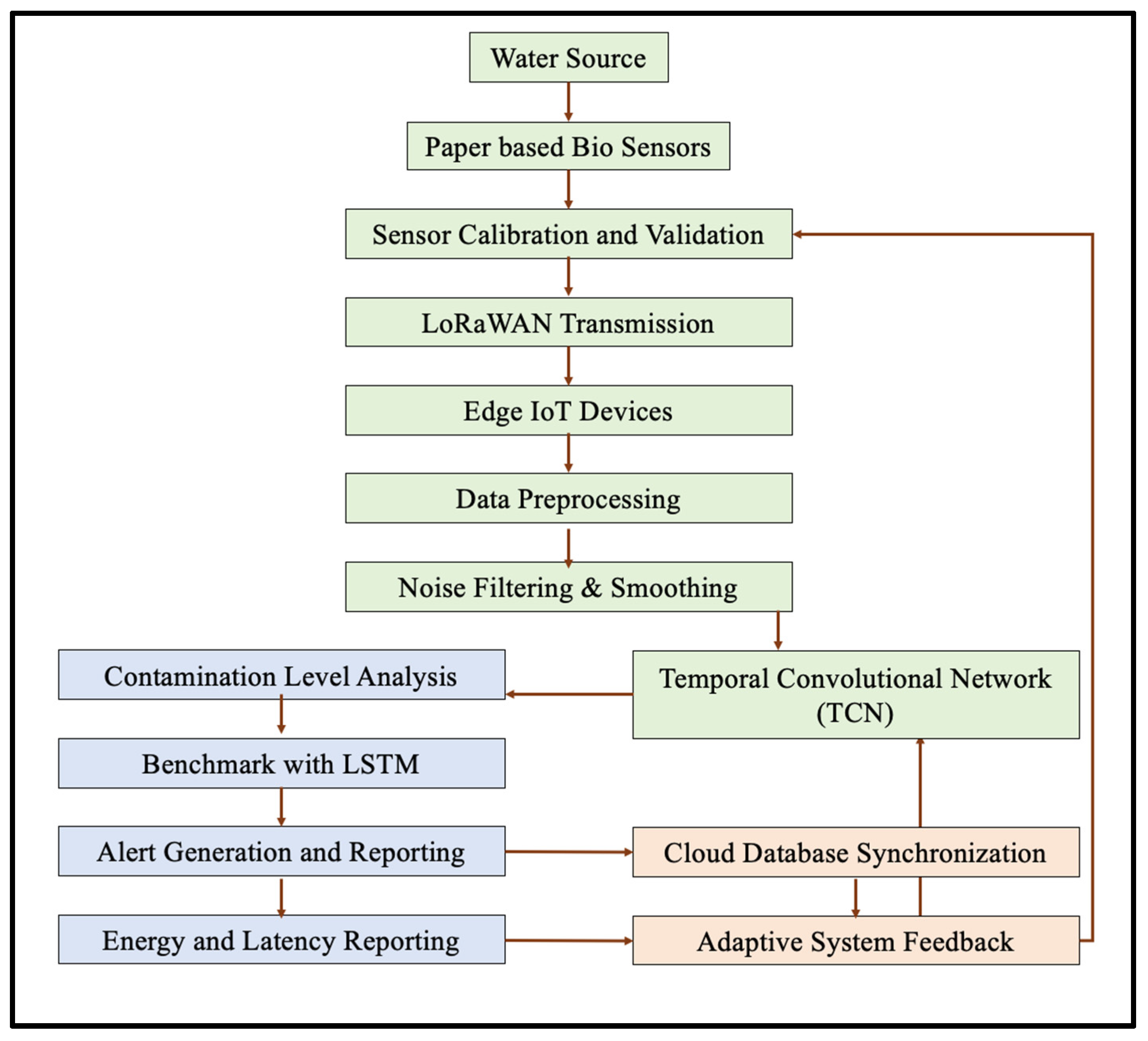
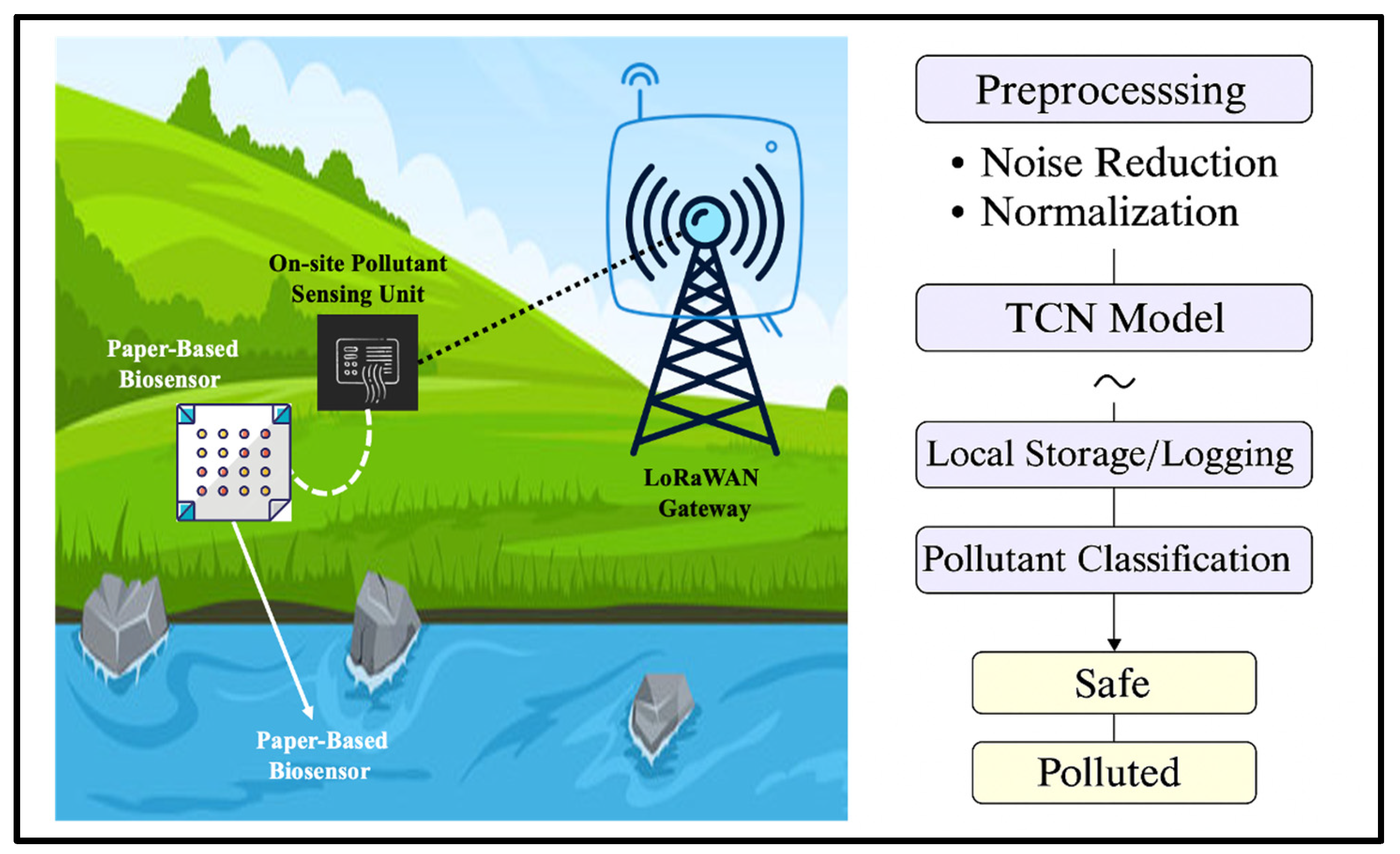
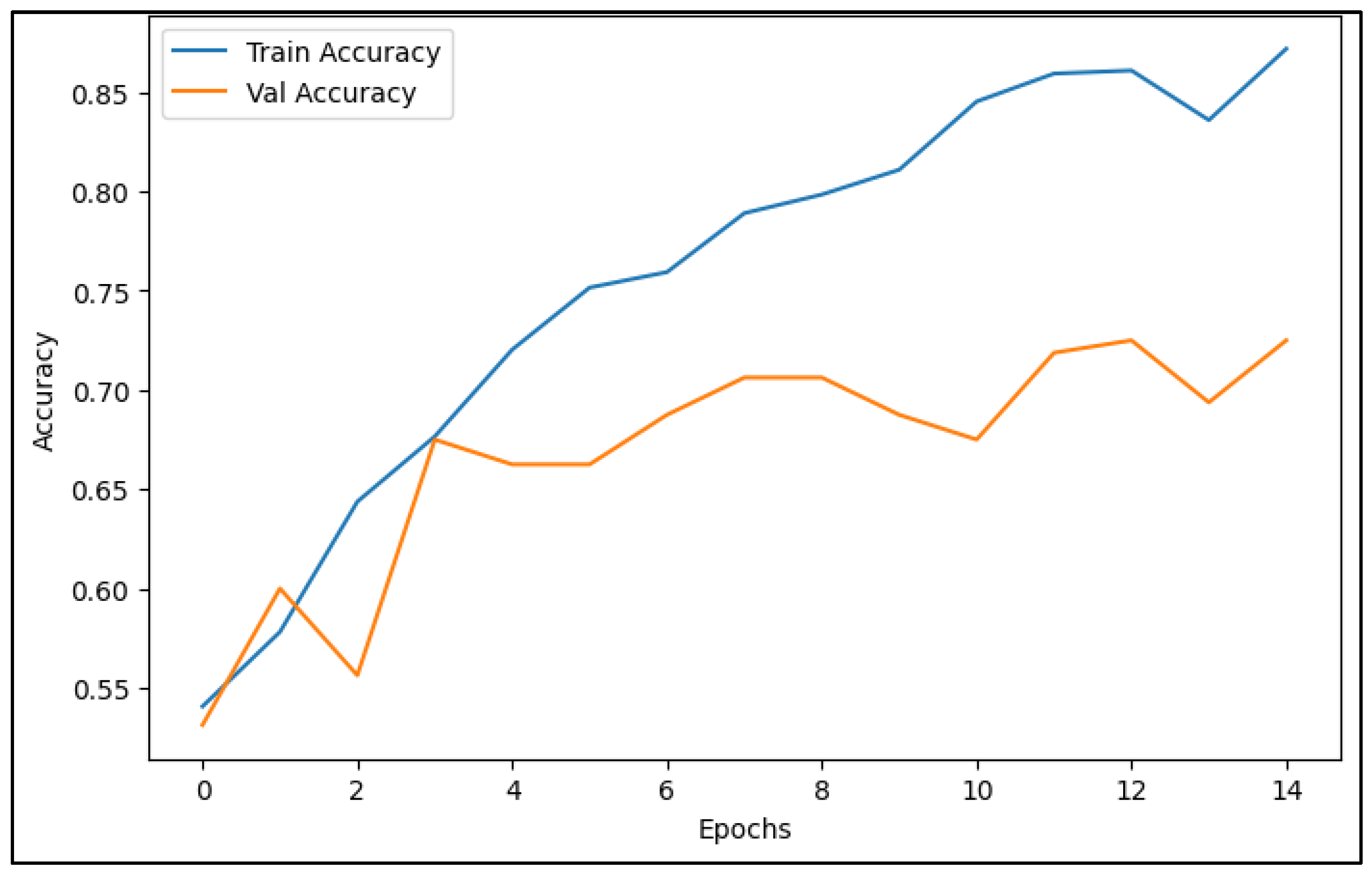
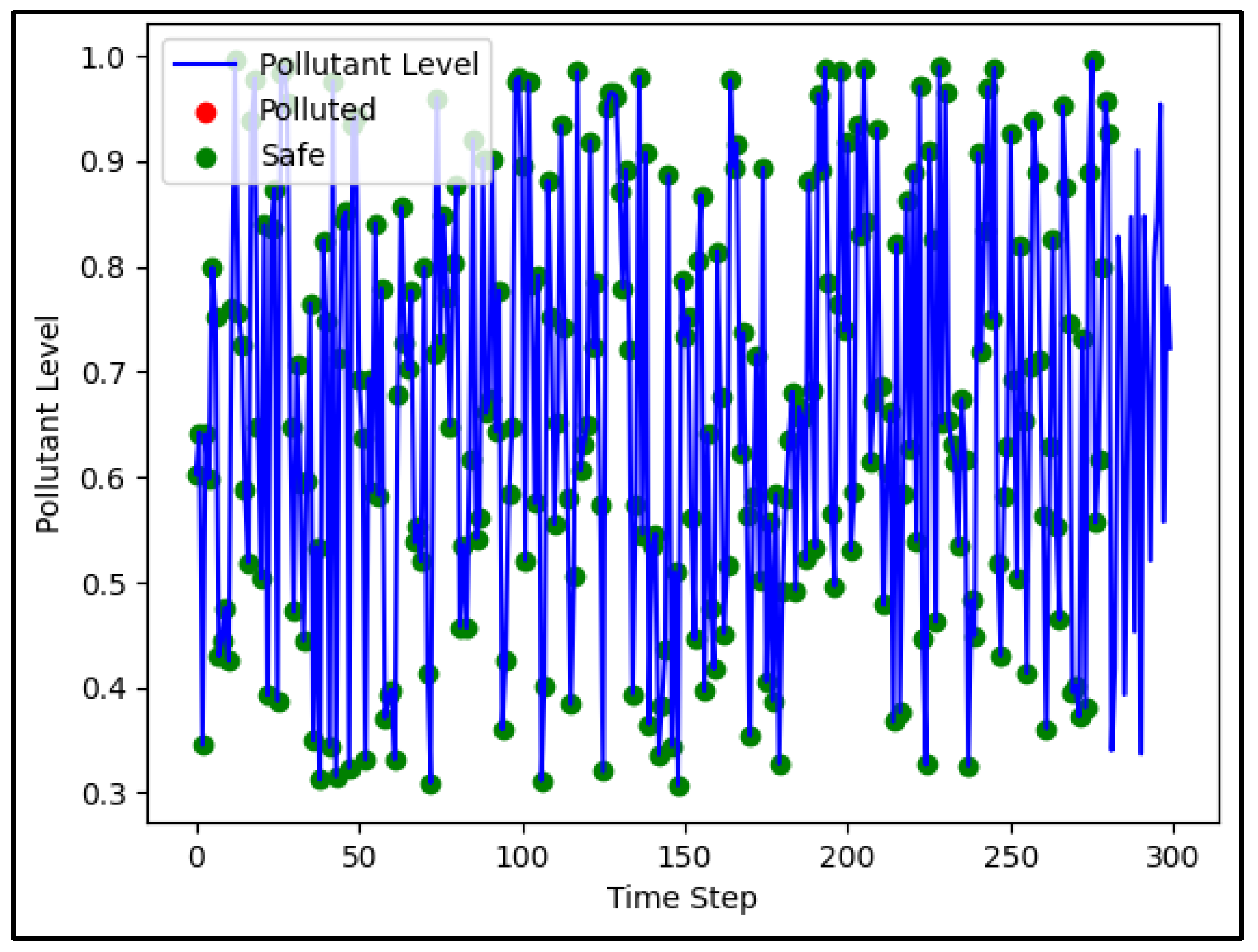
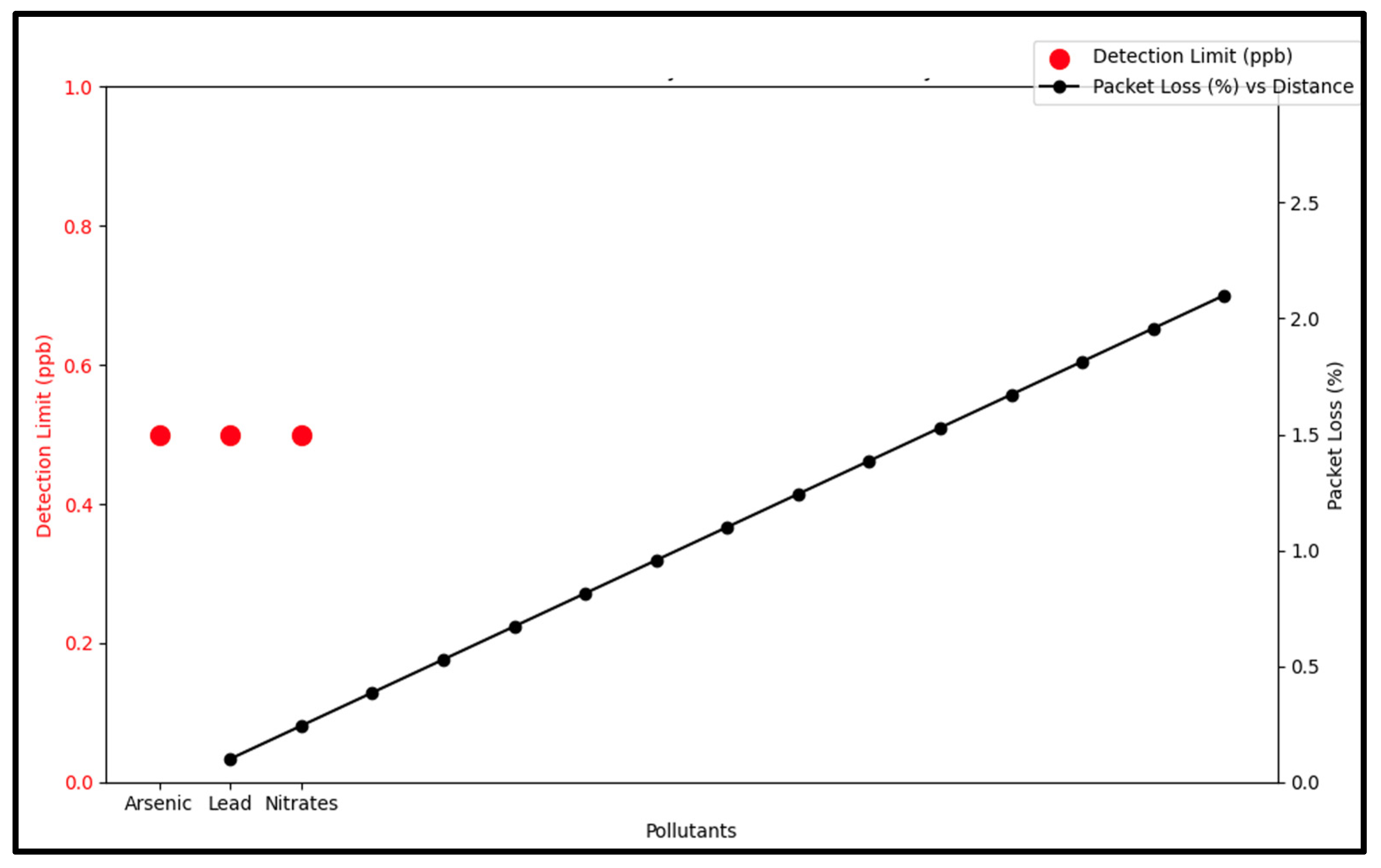
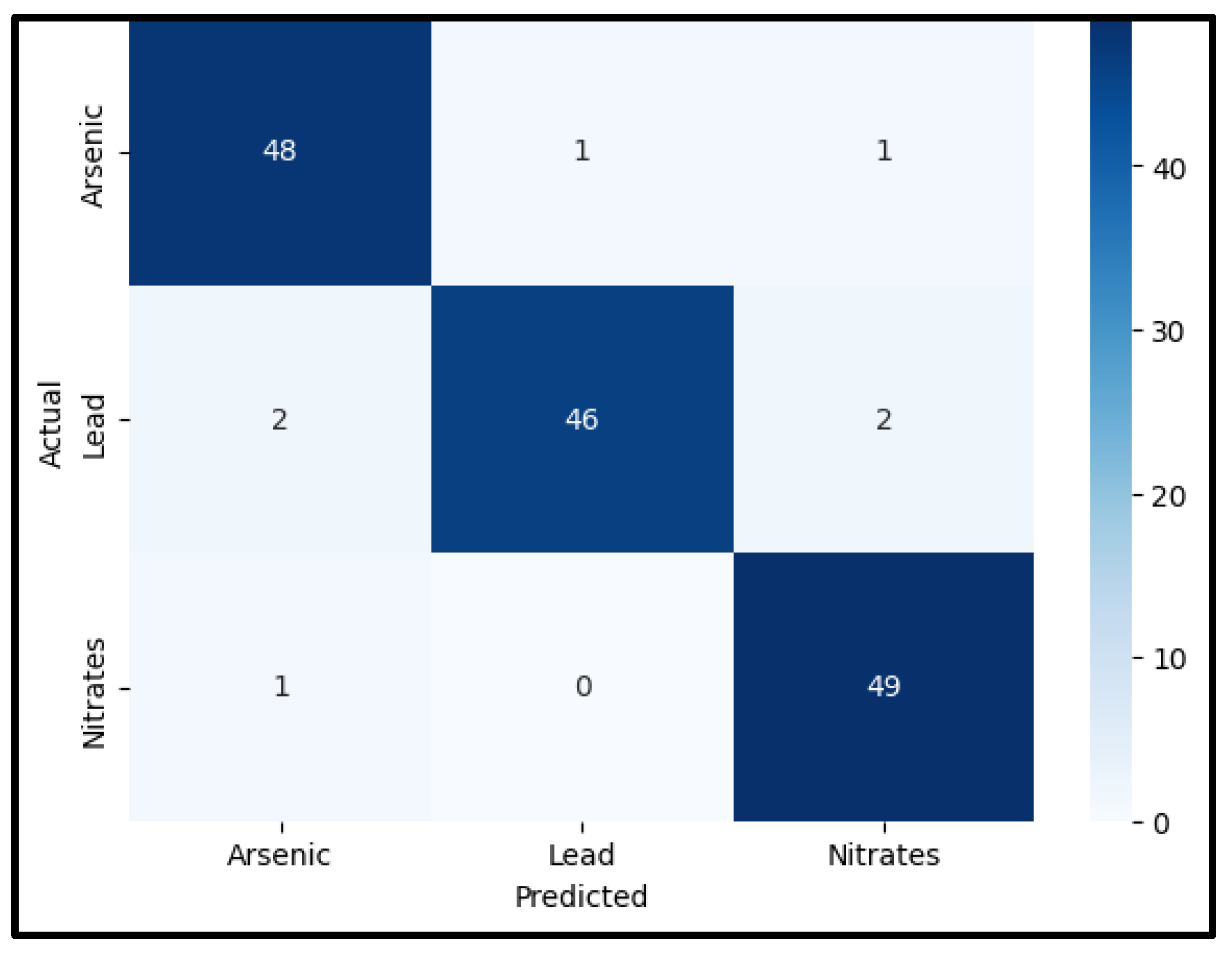
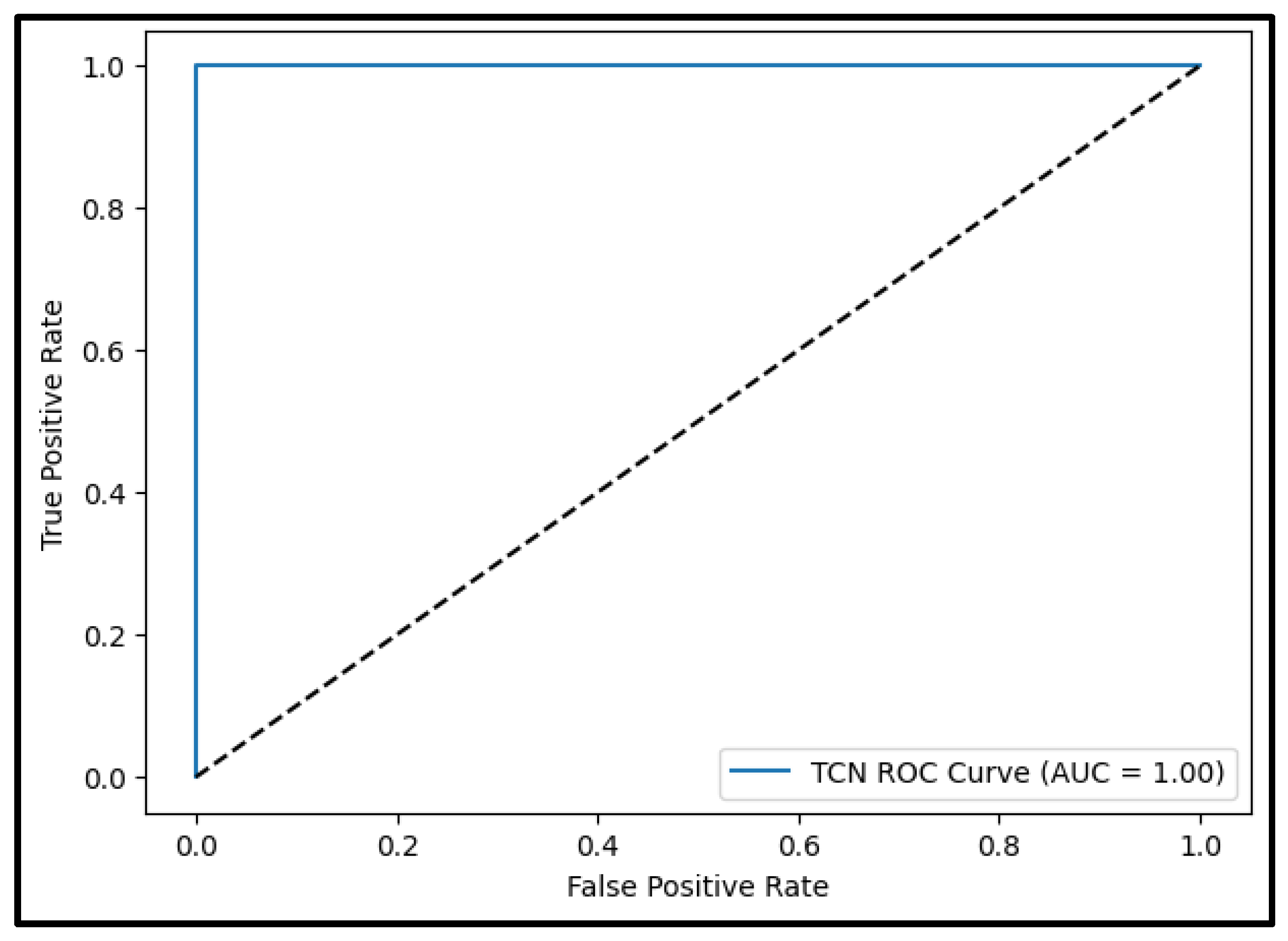


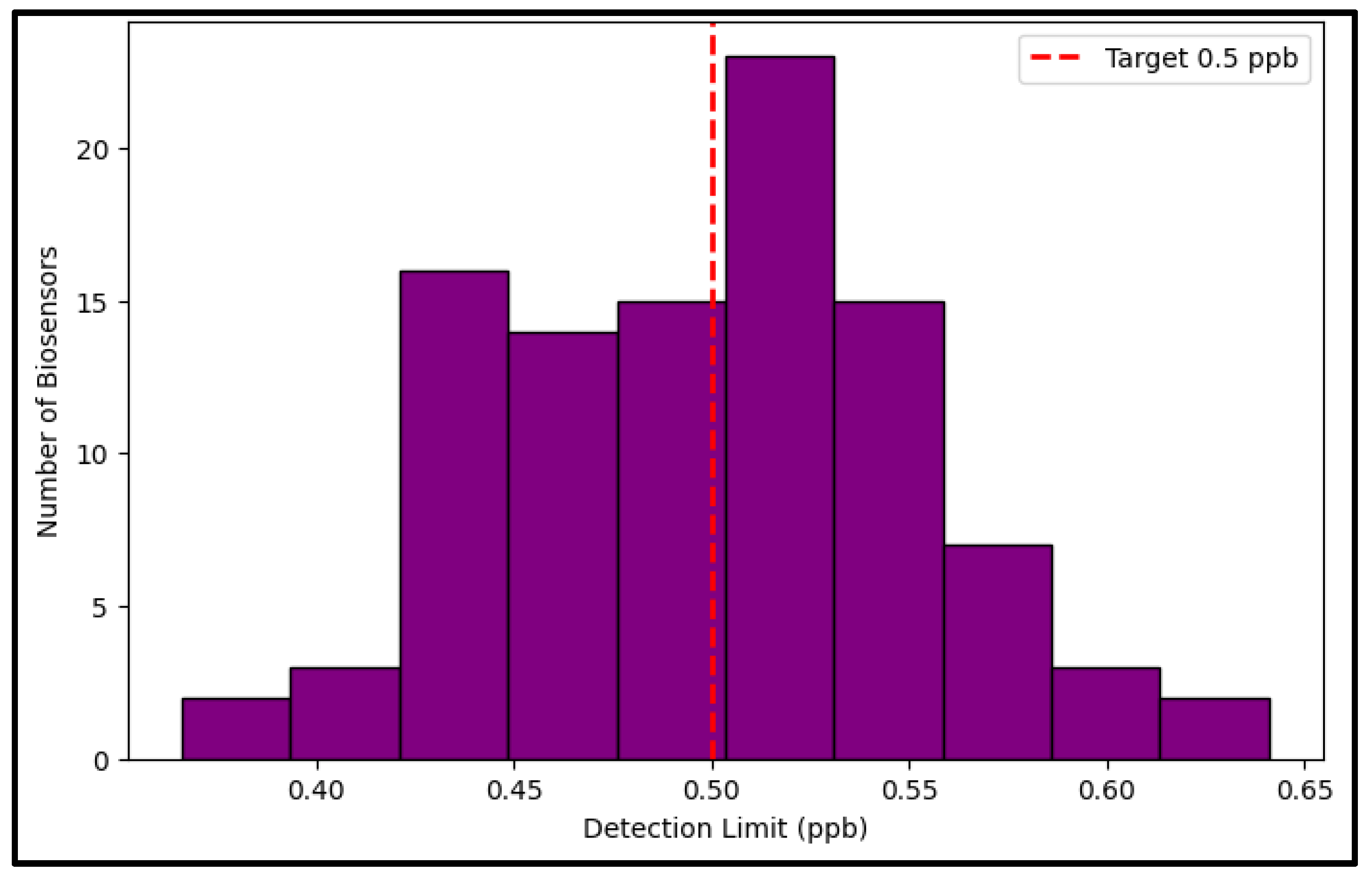

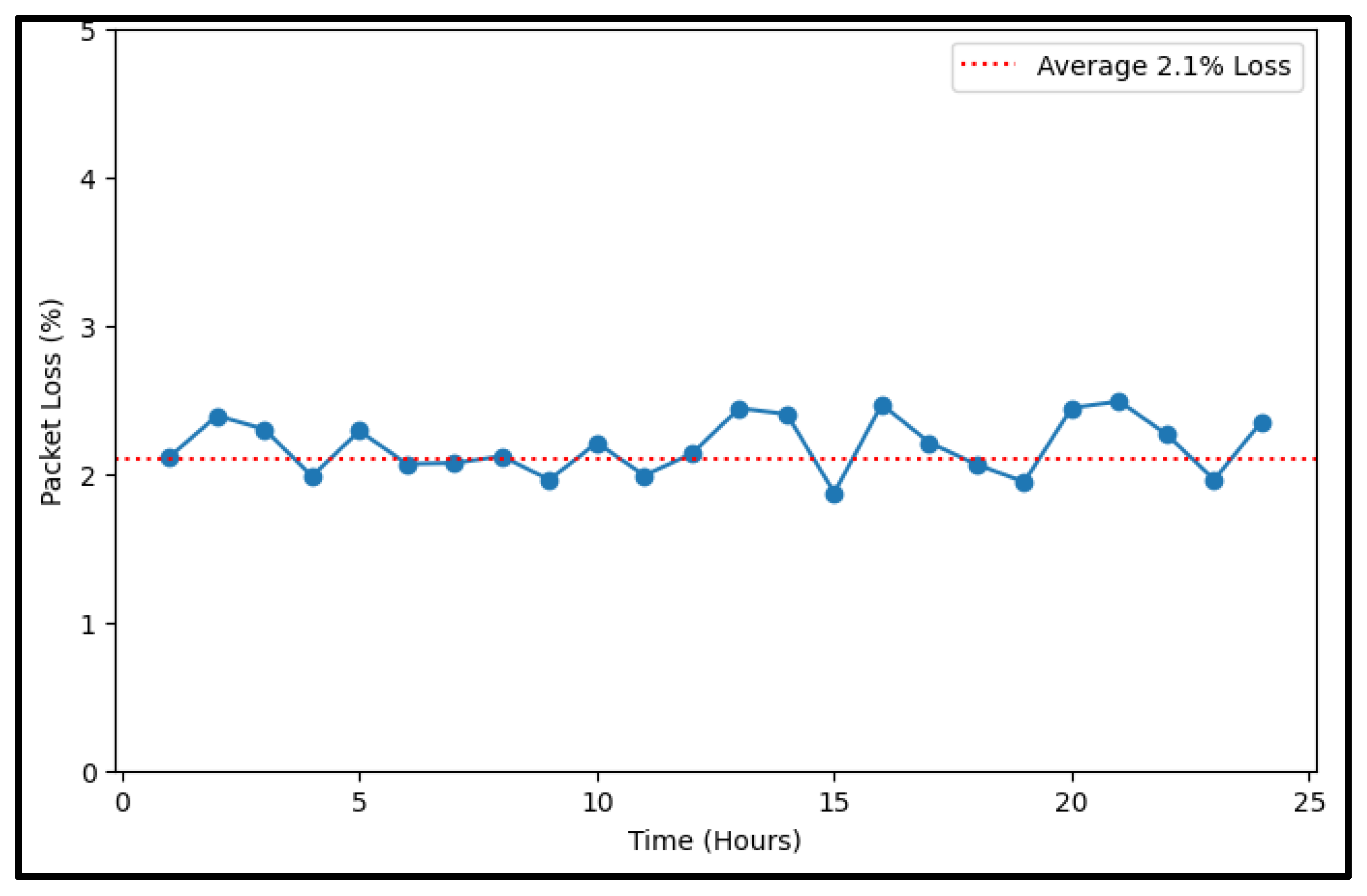
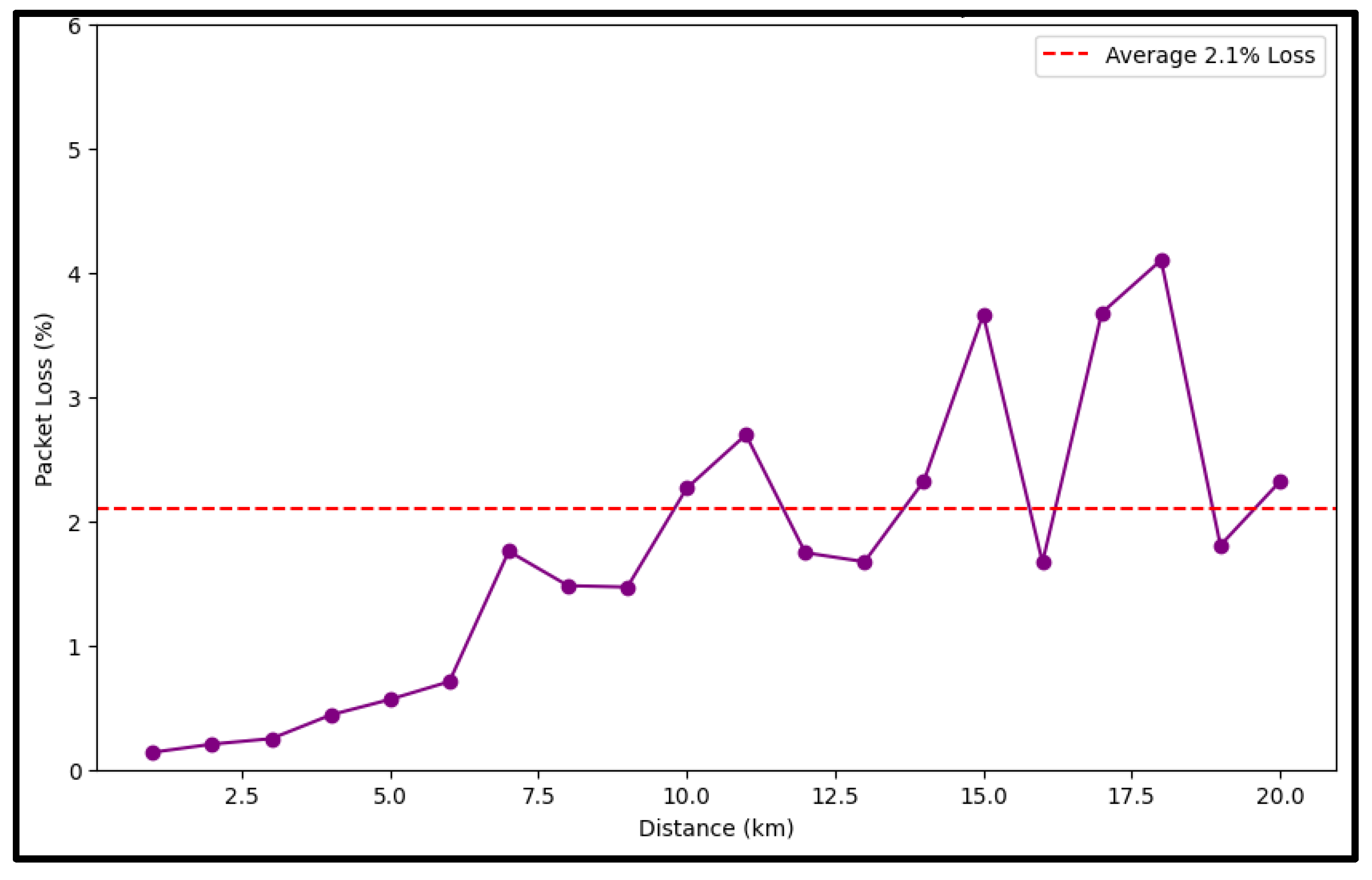
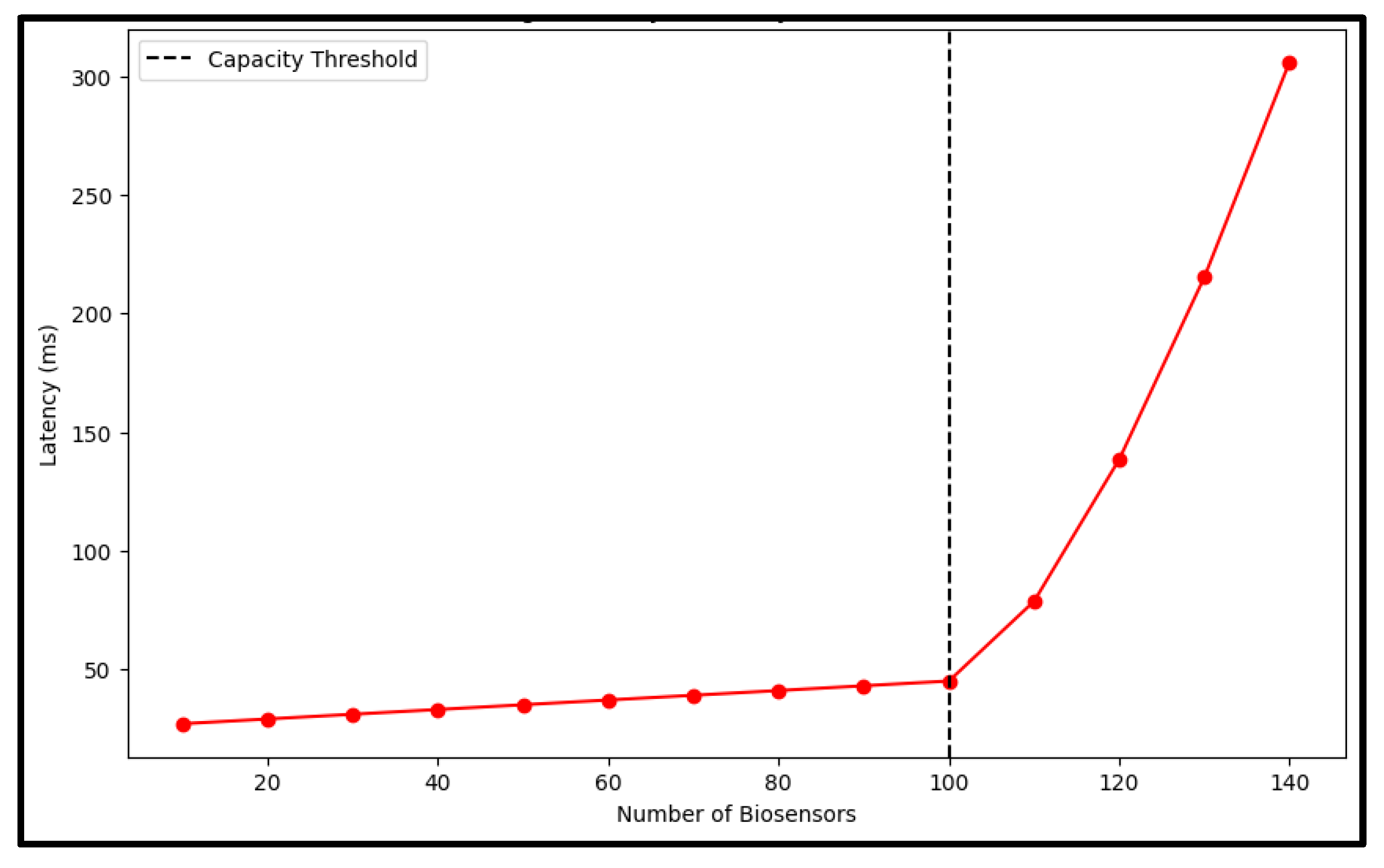
| Layer | Kernel Size | Dilation Factor | Number of Filters | Activation Function |
|---|---|---|---|---|
| Conv1 | 3 | 1 | 32 | ReLU |
| Conv2 | 3 | 2 | 32 | ReLU |
| Conv3 | 3 | 4 | 64 | ReLU |
| Conv4 | 3 | 8 | 64 | ReLU |
| Output layer | 1 | - | 1 (sigmoid) | Sigmoid |
| Parameter | TCN-Based System | LSTM-Based System |
|---|---|---|
| Detection accuracy (%) | 98.7 ± 0.5 | 92.4 ± 0.6 |
| Latency (ms) | 26.3 ± 1.2 | 42.4 ± 1.6 |
| Packet loss (%) | 2.1 ± 0.2 | 2.1 ± 0.2 |
| Energy consumption (%) | 30% ± 1.5 | 100% (cloud baseline) |
| Parameter | TCN-based system | LSTM-based system |
| Scenario | Distance (km) | Pollutant | Packet Loss (%) | Detection Accuracy (%) | Latency (ms) |
|---|---|---|---|---|---|
| Test 1 | 7.5 | Arsenic | 2.87 | 92.28 | 26.9 |
| Test 2 | 13.5 | Lead | 2.17 | 92.52 | 35.1 |
| Test 3 | 10.1 | Arsenic | 2.37 | 92.76 | 37.9 |
| Test 4 | 8.3 | Lead | 2.00 | 96.14 | 21.1 |
| Test 5 | 14.9 | Nitrates | 2.55 | 96.20 | 24.1 |
| Parameter | TCN-Based System | LSTM-Based System |
|---|---|---|
| Detection accuracy (%) | 98.7 | 92.4 |
| Latency reduction (%) | 38% faster than LSTM | Baseline (100%) |
| Packet loss (%) | 2.1 (LoRaWAN, stable) | 2.1 (LoRaWAN, stable) |
| Energy consumption (%) | 30% (edge processing) | 100% (cloud processing) |
| Model | Accuracy (%) | Latency (ms) | FLOPs (Million) |
|---|---|---|---|
| TCN | 98.7 | 26.3 | 3.1 |
| LSTM | 92.4 | 42.4 | 5.6 |
| Transformer | 97.5 | 42.0 | 7.8 |
| Model | Accuracy (%) | Latency (ms) | FLOPs (million) |
| Parameter | Edge (TCN) | Cloud (LSTM) |
|---|---|---|
| Device | Raspberry Pi 4B (1.5 GHz) | AWS EC2 (2 vCPU; 8 GB RAM) |
| Average latency (ms) | 26.3 ± 1.2 | 42.4 ± 1.6 |
| Energy per inference (mAh) | 0.46 | 1.52 |
| Operational mode | Event-triggered/continuous | Continuous only |
Disclaimer/Publisher’s Note: The statements, opinions and data contained in all publications are solely those of the individual author(s) and contributor(s) and not of MDPI and/or the editor(s). MDPI and/or the editor(s) disclaim responsibility for any injury to people or property resulting from any ideas, methods, instructions or products referred to in the content. |
© 2025 by the authors. Licensee MDPI, Basel, Switzerland. This article is an open access article distributed under the terms and conditions of the Creative Commons Attribution (CC BY) license (https://creativecommons.org/licenses/by/4.0/).
Share and Cite
Akshya, J.; Sundarrajan, M.; Dhanaraj, R.K. Edge IoT-Enabled Cyber–Physical Systems with Paper-Based Biosensors and Temporal Convolutional Networks for Real-Time Water Contamination Monitoring. Eng. Proc. 2025, 106, 3. https://doi.org/10.3390/engproc2025106003
Akshya J, Sundarrajan M, Dhanaraj RK. Edge IoT-Enabled Cyber–Physical Systems with Paper-Based Biosensors and Temporal Convolutional Networks for Real-Time Water Contamination Monitoring. Engineering Proceedings. 2025; 106(1):3. https://doi.org/10.3390/engproc2025106003
Chicago/Turabian StyleAkshya, Jothi, Munusamy Sundarrajan, and Rajesh Kumar Dhanaraj. 2025. "Edge IoT-Enabled Cyber–Physical Systems with Paper-Based Biosensors and Temporal Convolutional Networks for Real-Time Water Contamination Monitoring" Engineering Proceedings 106, no. 1: 3. https://doi.org/10.3390/engproc2025106003
APA StyleAkshya, J., Sundarrajan, M., & Dhanaraj, R. K. (2025). Edge IoT-Enabled Cyber–Physical Systems with Paper-Based Biosensors and Temporal Convolutional Networks for Real-Time Water Contamination Monitoring. Engineering Proceedings, 106(1), 3. https://doi.org/10.3390/engproc2025106003






